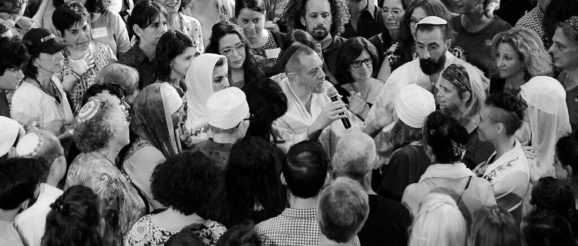Disruptive Innovation When It Comes To Prayer | Jewish Week

In 2010, an important book, “Women and Men in Communal Prayer,” was published. It featured a debate among distinguished Orthodox authorities concerning the extent to which women should be allowed to publicly participate in the Torah service within the context of normative Jewish law. Prior to the book’s publication several egalitarian-style prayer groups, known as partnership minyanim, had been established in otherwise Orthodox settings first in Israel and then the United States. But the publication of this book gave legitimacy to debating their existence within Orthodoxy. Although normative halacha, or Jewish law, still does not embrace allowing women to publicly read from the Torah, even in a minyan where men and women are separated by a mechitzah, partnership minyanim have become a familiar concept to a large sector of the observant world.
Like partnership minyanim, many of the innovations in Jewish prayer over the past decade are grass roots efforts that challenge the status quo by emphasizing diversity of experience and greater inclusivity. In “The New American Judaism,” Jack Wertheimer has documented a wide range of models of such “disruptive innovation.” In liberal spaces, these efforts reflect a desire for meaningful community connections, steeped in a prayer experience that does not depend upon pre-ordained services dictated by the authority of tradition. Many of these innovations are a product of millennials coming of age and the secular culture’s escalating embrace of choice and personalism, and rejection of authority and command.
Some of these new prayer models take place at venues that would have been unthinkable years ago. Communal observance by millennials increases when traditional stodgy venues give way to unconventional pop-up locations such as restaurants, bars and even bowling alleys. Rabbis of conventional synagogues are also starting to exit their walls and engage millennials on their own turf. And it is not just the locations: In many instances, creative rabbis and professionals are discarding the format and content of traditional services, replacing them with programming that focuses more on education and discussion, particularly surrounding holiday themes. Consider, for example, the introduction of “goat yoga” by a transdenominational rabbi in Venice Beach, Calif., as a means of re-enacting the traditional Yom Kippur avodah service. In Chicago, a Modern Orthodox rabbi runs a one-hour afternoon program combining prayer and education on both the first day of Rosh HaShanah and Yom Kippur for anyone who wants to connect with Jewish tradition.
These diverse models typically emphasize democratic, participatory prayer experiences and inclusivity. Despite the remixed quality of these disruptive innovations, a connection to the perceived authentic tradition still is visible in many instances, even if this connection embodies change and evolution. The issue of how much change Jewish tradition can tolerate and still retain its authenticity has occupied much of the discourse in Jewish thought since the Enlightenment. Although the current disruptive innovations may be new, the challenge they present is timeless.
Roberta Rosenthal Kwall is the Raymond P. Niro Professor at DePaul University College of Law. She is the author of “Remix Judaism: Preserving Tradition in a Diverse World” (forthcoming February 2020, Rowman & Littlefield) and “The Myth of the Cultural Jew: Culture and Law in Jewish Tradition.”
More essays from The Decade In Review: 2010 – 2019 as well as snapshots from our editorial team on the last ten years in Jewish Journalism, including the key issues they covered locally and nationally.
